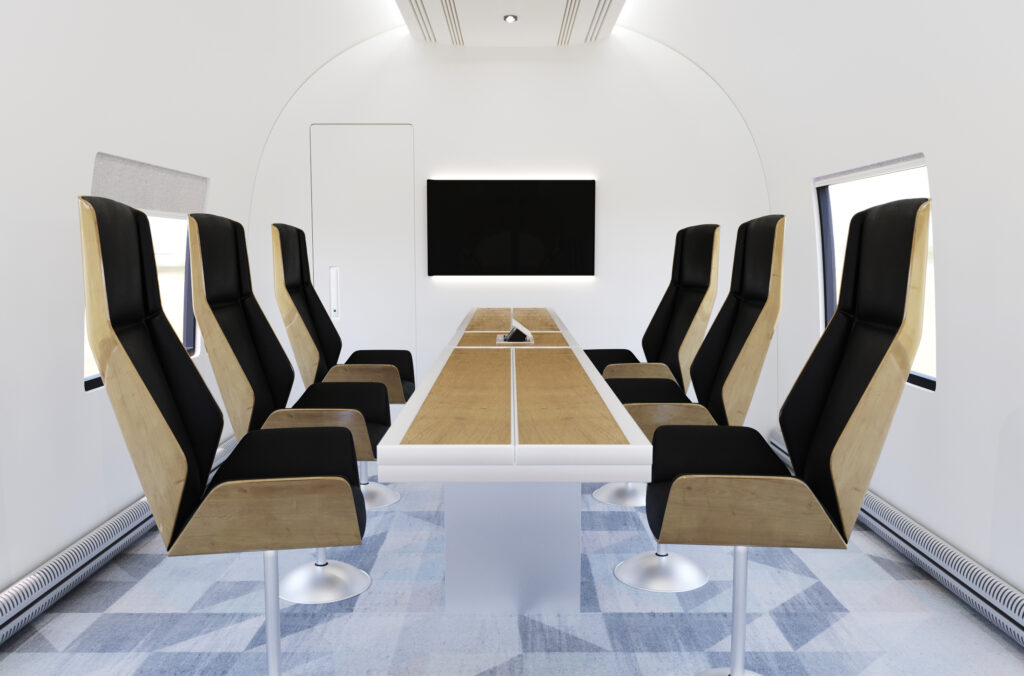Rail Baltica, the future train line that would connect the Estonian capital, Tallinn, with the Western European railway network, has developed a virtual concept train to illustrate its features – for whenever it may become reality.
Rail Baltica, a proposed electric train that has been planned already for at least a decade, would link Finland, Estonia, Latvia and Lithuania with Poland and through it with the European rail line network. The train would travel from Helsinki to Tallinn through an undersea tunnel and then go on to Riga, Latvia, Kaunas, Lithuania and then on to Warsaw, Poland. Through regional stations and connections, it would also connect the Lithuanian capital, Vilnius, and potentially other towns, airports and seaports.

As of January 2020, the supposedly “high-speed” railway was expected to be completed by 2026; the undersea railway tunnel between Tallinn and Helsinki was visioned to be completed around mid-2026.
A high speed of 249 km/h
Why supposedly “high-speed”? The Rail Baltica passenger train is projected to have the maximum speed of 249 km/h (155 mph) for passenger trains and 120 km/h (75 mph) for freight trains. Even the Eurostar trains that travel between London and Paris have the top speed of 320 km/h (200 mph); the French TGV high-speed trains have reached the top speed of 574.8 km/h (357.2 mph) – in 2007.
The length of the railway between Tallinn and Warsaw would be at least 950 kilometres (590 miles). This would mean that – if the train travelled at its top speed the entire distance – the trip from Tallinn to Warsaw would take almost four hours. But we’d have to take into the account the stops, the accelerations and the decelerations along the way, which in reality would extend the trip considerably. For comparison, a flight between Tallinn and Warsaw takes about 90-100 minutes.

According to Rail Baltica, the virtual concept train is inspired by the one element that connects the Baltic states – the Baltic Sea. “Sun, sea and sand are reflected in the colour scheme of the model train. This virtual model is an imaginary train, inspired by the most modern high-speed train sets which are in operation in Europe and elsewhere in the world,” Rail Baltica said in a statement.
The first class would offer extra comfort
“In the standard class, each train is envisaged to consist of eight carriages with approximately 70 seats per carriage. Wi-fi services, USB slots, charger points and screens with updated information on the travel route will be available to all the passengers.”

“Whereas, in the first class, like in the airlines, will have a higher level of comfort such as more personal space with fewer people per carriage and extra legroom. A special area for business travellers will be available with teleconferencing facilities such as the meeting room and presentation screen,” according to the railway company.

“A cafeteria located between the standard and first class will be serving hot drinks and snacks throughout the journey.” There’s no word on whether adult beverages would be served to make the journey easier.

Not many in the region have experienced high-speed rail travel
“Dedicated spaces allow wheelchair access for passengers with reduced mobility and priority seats for senior passengers, and each restroom is envisaged to be equipped with a baby changing table. Also, a special place for pets as they will be allowed to travel with the owners on every leg of the journey.”

“Only 37% people in Estonia and Latvia and 27% in Lithuania have travelled by high-speed train, according to the survey that was carried out across the Baltic countries at the end of 2020,” Agnis Driksna, the CEO and the chairperson of the management board at the Rail Baltica, noted.

“This requires us to even more actively inform and educate society about personal, environmental and economic benefits that the high-speed train would give to people of our region, including its overall positive impact and experience one can get when travelling by a high-speed train,” Driksna said.
Cover: The virtual concept of a proposed Rail Baltica train. Images by Rail Baltica.

